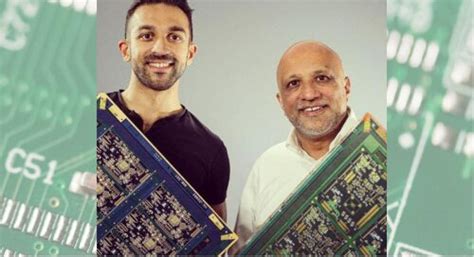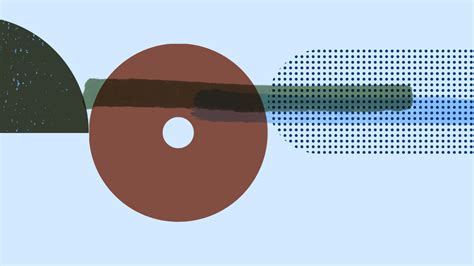What are PCBs?
Before we dive into the role of electrical engineers in PCB design, let’s first define what PCBs are. PCBs are flat boards made of insulating materials, such as fiberglass or plastic, with conductive copper traces printed on them. These traces connect various electronic components, such as resistors, capacitors, and integrated circuits (ICs), to form a complete electronic circuit.
PCBs come in various sizes and shapes, depending on the application they’re designed for. They can be as small as a fingernail or as large as several feet in diameter. PCBs can also have multiple layers, with conductive traces sandwiched between insulating layers to increase the density of components and reduce the overall size of the board.
The Role of Electrical Engineers in PCB Design
Electrical engineers play a crucial role in the design and development of PCBs. They are responsible for creating the schematic diagrams that define the electronic circuit, selecting the appropriate components, and laying out the PCB to ensure optimal performance and reliability.
Schematic Design
The first step in PCB design is creating a schematic diagram. This is a graphical representation of the electronic circuit, showing all the components and how they’re connected. Electrical engineers use specialized software, such as OrCAD or Eagle, to create schematic diagrams.
When creating a schematic diagram, electrical engineers must consider several factors, such as:
- The functionality of the circuit
- The power requirements of the components
- The signal integrity of the circuit
- The electromagnetic compatibility (EMC) of the circuit
Electrical engineers must also ensure that the schematic diagram is easy to read and understand, using standard symbols and conventions to represent components and connections.
Component Selection
Once the schematic diagram is complete, electrical engineers must select the appropriate components for the PCB. This involves considering factors such as:
- The electrical specifications of the components (e.g., voltage, current, power rating)
- The physical dimensions of the components
- The availability and cost of the components
- The reliability and longevity of the components
Electrical engineers must also ensure that the components are compatible with each other and with the PCB manufacturing process. For example, some components may require special handling or assembly techniques, such as surface-mount technology (SMT) or through-hole mounting.
PCB Layout
After selecting the components, electrical engineers must lay out the PCB. This involves determining the physical placement of the components on the board and routing the conductive traces to connect them.
PCB layout is a complex process that requires careful consideration of several factors, such as:
- The size and shape of the PCB
- The placement of components to minimize signal interference and crosstalk
- The routing of traces to minimize signal loss and reflections
- The thermal management of the PCB to prevent overheating
- The manufacturability of the PCB, including the minimum trace width and spacing, hole sizes, and soldermask requirements
Electrical engineers use specialized PCB layout software, such as Altium Designer or Cadence Allegro, to create the PCB layout. These tools allow engineers to visualize the PCB in 2D and 3D, and to perform various simulations and analyses to optimize the design.
Prototyping and Testing
Once the PCB layout is complete, electrical engineers must create a prototype of the board to test its functionality and performance. This involves manufacturing a small number of boards and assembling the components onto them.
Prototyping allows electrical engineers to:
- Verify that the circuit functions as intended
- Measure the electrical characteristics of the circuit, such as voltage, current, and frequency response
- Test the circuit under various environmental conditions, such as temperature, humidity, and vibration
- Identify and correct any design flaws or manufacturing defects
After successful prototyping, the PCB design can be finalized and sent for mass production.

PCB Engineers
PCB Engineers are electrical engineers who specialize in the design and development of PCBs. They have a deep understanding of electronic circuits, components, and manufacturing processes, and are skilled in using PCB design software and tools.
PCB Engineers may work in various industries, such as:
- Consumer electronics
- Automotive electronics
- Medical devices
- Aerospace and defense
- Industrial automation
Responsibilities of PCB Engineers
The responsibilities of PCB Engineers vary depending on the industry and the specific project, but generally include:
- Creating schematic diagrams and PCB layouts
- Selecting appropriate components and materials
- Simulating and analyzing PCB performance
- Collaborating with other engineers and stakeholders to ensure design requirements are met
- Troubleshooting and debugging PCB designs
- Staying up-to-date with the latest PCB design techniques and technologies
Skills and Qualifications of PCB Engineers
To become a PCB Engineer, one typically needs a bachelor’s degree in electrical engineering or a related field. Some employers may also require a master’s degree or professional certification, such as the Certified Printed Circuit Designer (CPCD) credential offered by the IPC (Association Connecting Electronics Industries).
In addition to formal education, PCB Engineers must have a strong foundation in:
- Electronic circuit theory and analysis
- PCB design software and tools, such as Altium Designer, Eagle, or KiCad
- Component selection and sourcing
- Signal integrity and electromagnetic compatibility (EMC) principles
- PCB manufacturing processes and standards, such as IPC-2221 and IPC-6012
- Problem-solving and critical thinking skills
- Communication and collaboration skills
Career Outlook for PCB Engineers
The demand for PCB Engineers is expected to grow in the coming years, driven by the increasing complexity and miniaturization of electronic devices. According to the U.S. Bureau of Labor Statistics, employment of electrical and electronics engineers is projected to grow 3 percent from 2019 to 2029, about as fast as the average for all occupations.
PCB Engineers can expect competitive salaries and benefits, with the median annual wage for electrical engineers being $98,530 in May 2020. However, salaries can vary widely depending on factors such as industry, location, and level of experience.

FAQ
1. What is the difference between a PCB Designer and a PCB Engineer?
A PCB Designer is primarily responsible for creating the physical layout of a PCB, including placing components and routing traces. A PCB Engineer, on the other hand, is involved in the entire PCB design process, from schematic design to prototyping and testing. PCB Engineers have a broader set of skills and responsibilities than PCB Designers.
2. Can PCB Engineers work remotely?
Yes, many PCB Engineers can work remotely, especially those who primarily use computer-aided design (CAD) tools and collaborate with team members online. However, some aspects of PCB design, such as prototyping and testing, may require access to specialized equipment and facilities.
3. What programming languages do PCB Engineers use?
PCB Engineers typically do not write much code, as most PCB design work is done using graphical CAD tools. However, some PCB design software, such as KiCad and Eagle, support scripting languages like Python for automating repetitive tasks or creating custom libraries.
4. What are some common challenges faced by PCB Engineers?
Some common challenges faced by PCB Engineers include:
- Keeping up with the latest PCB design techniques and technologies
- Balancing the conflicting requirements of performance, cost, and manufacturability
- Ensuring signal integrity and EMC in high-speed or high-density designs
- Collaborating with cross-functional teams, such as mechanical engineers and manufacturing personnel
- Debugging and troubleshooting complex PCB designs
5. What is the future outlook for PCB Engineers?
The future outlook for PCB Engineers is positive, as the demand for electronic devices continues to grow and the complexity of PCB designs increases. Emerging technologies, such as 5G wireless, electric vehicles, and the Internet of Things (IoT), are expected to drive demand for skilled PCB Engineers in the coming years. However, PCB Engineers will need to continuously update their skills and knowledge to stay competitive in the job market.

Conclusion
In conclusion, electrical engineers play a crucial role in the design and development of PCBs, which are essential components in virtually all modern electronic devices. PCB Engineers, in particular, specialize in creating schematic diagrams, selecting components, laying out PCBs, and testing prototypes to ensure optimal performance and reliability.
To become a successful PCB Engineer, one needs a strong foundation in electronic circuit theory, PCB design software and tools, and manufacturing processes and standards. PCB Engineers must also have excellent problem-solving, communication, and collaboration skills to work effectively with cross-functional teams and stakeholders.
The future outlook for PCB Engineers is positive, with growing demand driven by the increasing complexity and miniaturization of electronic devices. However, PCB Engineers will need to continuously update their skills and knowledge to stay competitive in the job market and adapt to emerging technologies and trends.
| Role | Responsibilities | Skills |
|---|---|---|
| PCB Designer | – Creating physical layout of PCB – Placing components and routing traces |
– PCB design software (e.g., Altium, Eagle) – Knowledge of PCB manufacturing processes and standards |
| PCB Engineer | – Creating schematic diagrams – Selecting components – Laying out PCBs – Testing prototypes |
– Electronic circuit theory – PCB design software and tools – Component selection and sourcing – Signal integrity and EMC principles – PCB manufacturing processes and standards – Problem-solving and critical thinking – Communication and collaboration |
In summary, electrical engineers, and specifically PCB Engineers, play a vital role in the design and development of the electronic devices that we rely on every day. As technology continues to advance, the demand for skilled PCB Engineers is likely to grow, making it an exciting and rewarding career path for those with a passion for electronics and problem-solving.

Leave a Reply